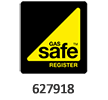The Essential Checklist Posted by SOUK
As we move forward, the safety and well-being of our young students remain at the top of our priority list. As the breeding grounds for future leaders, schools should be havens of knowledge, progress, and, most importantly, safety. Among the various aspects of providing a safe learning environment, gas safety is a critical component that requires our full attention.
Gas is essential in the everyday operations of educational institutions, from keeping classrooms warm during the winter to powering kitchen machines that produce nutritious meals. This ease, however, comes with the obligation of controlling possible dangers linked with petrol consumption. We discuss the significance of gas safety in schools and reveal the seven critical checkpoints that administrators, instructors, and maintenance personnel must strictly adhere to.
8 Essential Gas Safety Rules All Schools Must Follow
As a UK principal, the safety and well-being of our children and staff are of the utmost concern to me. Gas safety is vital to our ongoing awareness and respect for rules to provide a safe learning environment. Let’s go through each item on the gas safety checklist and discuss their importance in protecting our school community:
1) Regular Gas Safety Inspections
Annual gas safety checks by a certified Gas Safe engineer are mandatory. These inspections thoroughly examine all gas appliances, pipes and flues on school grounds. Following these criteria, we can identify and correct problems before they become serious, ensuring that gas systems remain efficient and safe.
Remember, when choosing a gas supplier, ask if they offer a discount if you work with an associated Gas Safe engineer to do safety inspections as a part of a package deal.
2) Install Carbon Monoxide (CO) Alarms
Carbon monoxide is a quiet and odourless killer; installing CO alarms can save your life. Placing CO alarms strategically around the school grounds, particularly near gas appliances and sleeping spaces, offers an early warning system in the event of CO presence, allowing for speedy evacuation and necessary response.
3) Ensure That All Employees have Gone Through Gas Safety Training
Giving our employees gas safety training gives them the information they need to successfully recognise possible dangers and handle gas-related events. This training instils confidence and guarantees that our personnel can respond quickly and responsibly in emergencies, from discovering gas leaks to securely operating gas appliances.
4) Install Gas Leak Detection Systems
Installing gas leak detection systems is a proactive technique to detect suspected gas leaks immediately. These devices, such as boiler rooms and kitchens, can be strategically positioned where gas appliances are regularly utilised. Early discovery of a leak will result in a quick reaction, averting negative repercussions.
5) Establish Emergency Procedures
Establishing clear and well-communicated emergency procedures for gas-related situations is a cornerstone of our safety. Everyone in the school community should be acquainted with these protocols, which include evacuation plans and contact information for the appropriate authorities. Drills and practice sessions regularly strengthen preparation and create confidence in reacting to situations.
6) Adequate Ventilation
It’s critical to provide sufficient ventilation in spaces with gas equipment. Adequate ventilation aids in dispersing gases such as carbon monoxide (CO) and decreases the possibility of harmful gas buildup. Examining ventilation systems regularly and keeping them clean of blockages is critical to ensure their performance.
7) Gas Appliance Maintenance
Gas appliances require regular maintenance and repair to perform safely and reliably. Routine maintenance reduces the danger of malfunctions and the possibility of hazardous circumstances caused by inadequately maintained equipment. Maintaining detailed records of maintenance operations allows for a traceable history of gas appliance maintenance.
8) Embrace Green Gas Solutions
As future stewards, we are responsible for lessening our carbon impact and migrating to cleaner petrol options. Exploring renewable energy sources, such as biogas and hydrogen, which create little greenhouse gas emissions when used for heating and cooking, is one approach to do this. We can drastically minimise our school’s environmental impact without compromising safety by cooperating with energy suppliers who provide green gas options.
Furthermore, installing energy-efficient gas appliances and heating systems with high energy efficiency ratings can reduce gas consumption and minimise our school’s overall energy expenses.
Conclusion
As UK principals, we have the sacred duty of protecting the safety and well-being of our school community in the pursuit of excellence and nurturing young minds. Gas safety is a critical pillar in establishing a safe learning environment that protects our students, faculty, and visitors from possible threats. We reaffirm our commitment to maintaining the highest levels of safety on our school grounds by diligently completing the vital gas safety checklist.
Beyond our immediate duties, we see a chance to benefit the environment by embracing greener methods of gas consumption. We demonstrate our dedication to sustainability by exploring renewable energy sources and implementing energy-efficient gas solutions, establishing a solid example for our students and the greater community.



